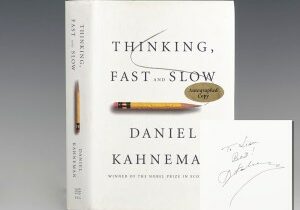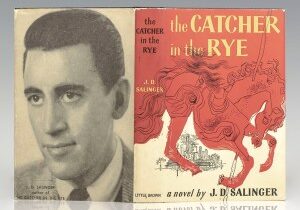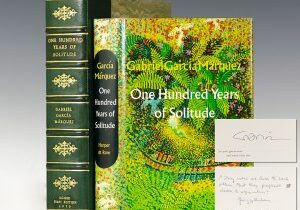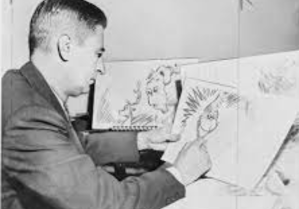Attributed to the singular ancient Greek poet Homer, the Iliad and the Odyssey are considered to be, not only, the most important works of ancient Greek literature but the oldest extant works of Western literature. The epic poems were likely composed near the end of the 8th century B.C.E. in the Greek coastal region of Anatolia in an oral tradition more likely intended to be performed than read. The Iliad, set in the midst of the ten-year Trojan War, focuses on the quarrel between King Agamemnon and the warrior Achilles. The Odyssey tells the epic tale of the journey of Odysseus, King of Ithaca, after the fall of Troy. The Homeric Question, concerning the tales’ true authorship, continues to be debated – with some scholars believing the poems to be the work of many contributors over the course of centuries. Perhaps the most influential works in the literary canon, the Iliad and the Odyssey were translated as early as 1488 and continue to influence the narrative style of contemporary literature.

Odissea Per Raphaelem Volaterranum in Latinum Conversa (The Odyssey of Homer translated by Raphael of Volterra in Latin).
One of the earliest obtainable translations of The Odyssey, Odissea Per Raphaelem Volaterranum in Latinum Conversa was translated by Italian humanist, historian and theologian Raffaello Maffei from Greek into Latin in 1510. In addition to his best-known work, Commentariorum rerum urbanarum libri XXXVIII, Maffei translated from Greek into Latin the Oeconomics of Xenophon and the Gothic War of Procopius. Bound in contemporary vellum, the example above contains woodcut titles and the printer’s device to the title page and conclusion of the text. This example was acquired from the library of American bibliophile and author Robert R. Dearden, known for his extensive rare bible collection with a focus on early editions of American Bibles.
Published in Venice in 1524, the third Aldine edition of The Odyssey is one of the most coveted and exceptionally rare examples of Homer’s landmark work, with only two having appeared at auction in the last 80 years. Bound in the original vellum, the example above contains text in Greek with the woodcut Aldine device to the title page and final colophon leaf.
Perhaps the best-known translations of the Iliad and Odyssey are attributed to celebrated poet and essayist Alexander Pope. When Pope decided to take on the enormous prospect of translating Homer’s Iliad in 1723, he did so in subscriptions, offering one volume of the work each year for six years. His translation of the Iliad appeared between 1715 and 1720. It was acclaimed by Samuel Johnson as “a performance which no age or nation could hope to equal.” Encouraged by the success of the Iliad, Pope published a translation of the Odyssey in 1726 with the help of William Broome and Elijah Fenton. Both works proved extremely profitable for Pope and would, in their own right, became extraordinarily influential works of literature. “[Pope’s] ‘Homer’ was long regarded as a masterpiece, and for a century was the source from which clever schoolboys like Byron learnt that Homer was not a mere instrument of torture invented by their masters. No translation of profane literature has ever occupied such a position” (DNB).

First edition, one of 750 numbered copies of James Joyce’s Ulysses; inscribed by him to Lewis Galantiere
A retelling of the Odyssey set in modern-day Dublin, James Joyce’s modernist novel Ulysses, published in 1922, has been called “the most prominent landmark in modernist literature” and a work where life’s complexities are depicted with “unprecedented, and unequaled, linguistic and stylistic virtuosity” (New York Times). Chronicling the peripatetic appointments and encounters of Leopold Bloom in Dublin in the course of an ordinary day, the epic work is divided into 18 episodes which roughly correspond to the 24 chapters in Homer’s Odyssey and establishes a series of parallels between the poem and the novel, with structural correspondences between the characters and experiences of Leopold Bloom and Odysseus.
Strictly based on Homer’s Odyssey, Greek poet and philosopher Nikos Kazantzakis began working his own adaptation of the epic poem in 1924. Consisting of 24 rhapsodies as in the original Odyssey, the work was published 14 years later in 1938 after Kazantzakis had drafted several versions. The works’ central theme proved to be the importance of struggle for its own sake, as opposed to reaching a final goal; Kazantzakis considered The Odyssey: A Modern Sequel his most important work.

First Edition of Joseph Campbell’s The Hero With A Thousand Faces; inscribed by him to novelist Richard Adams
A discussion of Homer’s epic poems would not be complete without mentioning Joseph Campbell’s magnum opus: The Hero With A Thousand Faces. In his seminal work, Joseph Campbell explores the theory that important myths from around the world have survived for thousands of years all share a fundamental structure, which he called the monomyth. Campbell’s work in comparative mythology, specifically the concept of the monomyth, or journey of the archetypal hero can be applied as a common template to a range of mythological narratives. Popularized in The Hero with a Thousand Faces, Campbell described the narrative pattern of the hero’s journey as follows: “A hero ventures forth from the world of common day into a region of supernatural wonder: fabulous forces are there encountered and a decisive victory is won: the hero comes back from this mysterious adventure with the power to bestow boons on his fellow man.” He and other scholars described the narratives of Odysseus, Gautama Buddha, Moses, and Jesus Christ in terms of the monomyth.
In addition to the works featured above our collection currently includes many other works by Homer, Alexander Pope, James Joyce, Nikos Kazantzakis, Joseph Campbell, and works on the subject of Ancient Greece.













